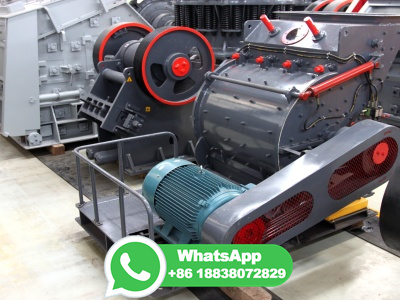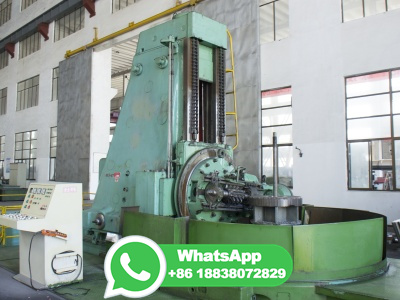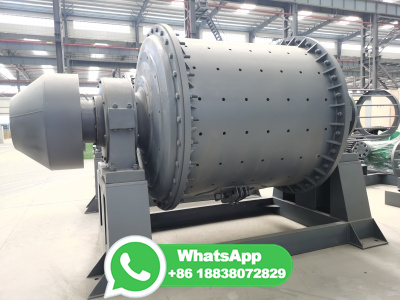
WEBThe Refinery is a midgame and lategame production block in Space Engineers, necessary for converting raw ores into useful refined materials. In contrast to the similar midgame focused Basic Refinery which cannot process platinum, uranium, silver, and gold, the Refinery can process all ore types. The Refinery has much higher .
WhatsApp: +86 18203695377
WEBsilver. silver processing, preparation of the ore for use in various products. Silver has long been valued for its white metallic lustre, its ability to be readily worked, and its resistance to the corrosive effects of moisture and oxygen. The lustre of the pure metal is due to its electron configuration, which results in its reflecting all ...
WhatsApp: +86 18203695377
WEBApr 4, 2012 · Main component of BF slag is SiO 2 and Al 2 O 3, coming from iron ore as gangue minerals, and CaO added as a flux during sintering process. On the other hand, BOF slag mainly contains CaO added as a refining agent, and SiO 2 and iron oxides produced by oxidation refining process. The EAF slag is classified into two types, .
WhatsApp: +86 18203695377
WEBIron and aluminum are removed from the leach solution by the addition of lime, ... The hydrometallurgical process for laterite ore can use sulfuric acid or ammonia leach solutions. Recovery from arsenide ores ... Electro refining in a chloride or sulfate medium at − V will make a hode coating of % cobalt.
WhatsApp: +86 18203695377
WEBElectrolytic iron is considered the "wet process" since electrolysis requires electric charges to move through a liquid solution. This action causes a chemical reaction called electrolytic refining. The result of electrolytic refining is electrolytic iron. An anode (raw material) and a hode (base plate) are immersed into an electrolyte ...
WhatsApp: +86 18203695377
WEBOct 6, 2022 · The "Iron Ore Challenge": Commercial iron ores with iron content of 62% or higher are projected to be in short supply by the early 2030s. Hydrogen or natural gasbased steelmaking requires ores ...
WhatsApp: +86 18203695377
WEBThe reduction of iron oxides can be accomplished in a blast furnace. A blast furnace is essentially a huge chemical reactor capable of continuous operation. The furnace is charged at the top with a mixture of iron ore, coke, and limestone. A Coke is coal that has been heated in the absence of air to drive off volatile components.
WhatsApp: +86 18203695377
WEBAug 12, 2021 · Beginners Gold Refining Process Forum . iron ore containing rhodium and palladium. Thread starter killachong; Start ... the mine ran at 1 g Au per ton average and the common knowledge was that gold followed minor galena patches in the ore. The iron is probably also true as there are some loellingite in the arsenic veins. Göran . .
WhatsApp: +86 18203695377
WEBNov 30, 2021 · The hammering process welded and elongated the iron crystals. As in the blast furnace, slag acted as a flux to reduce oxidization while the iron was welded together. By working from the center outward, excess slag was squeezed to the ends of the bars. The result was the main product of the iron works, wrought iron merchant bars.
WhatsApp: +86 18203695377
WEBIron ores are refined in the blast furnace. The product of the blast furnace is called pig iron and contains about 4% carbon and small amounts of manganese, silicon, phosphorus, and sulfur. About 95% of this iron is processed further to make steel, often by the openhearth process or the Bessemer process, but more recently in the United States ...
WhatsApp: +86 18203695377
WEBWilliam Kelly's pneumatic iron. William Kelly (1811–1888) was the American ironworks owner who is credited with first identifying a pneumatic process for iron refining. Kelly's discovery was a critical development in the commercial production of iron. In 1846, Kelly, of Pittsburgh, Pennsylvania, married Mildred Gracey of Eddyville, Kentucky.
WhatsApp: +86 18203695377
WEBThe blast furnace uses coke, iron ore and limestone to produce pig iron. Coal traditionally has been a key part of the cokemaking process. The coal is crushed and ground into a powder and then charged into an oven where it is heated to approximately 1800°F in the absence of oxygen. As the oven is heated, the coal begins to melt so most of the ...
WhatsApp: +86 18203695377
WEBJul 12, 2023 · Summary. Extractive metallurgy is the practice of removing valuable metals from an ore and refining the extracted raw metals into purer form. The field of extractive metallurgy encompasses many specialty subdisciplines, including mineral processing, hydrometallurgy, pyrometallurgy, and electrometallurgy.
WhatsApp: +86 18203695377
WEBtin processing, preparation of the ore for use in various products. Tin (Sn) is a relatively soft and ductile metal with a silvery white colour. It has a density of grams per cubic centimetre, a low melting point of °C ( °F), and a high boiling point of 2,625 °C (4,757 °F). Tin is allotropic; that is, it takes on more than ...
WhatsApp: +86 18203695377
WEBmanganese processing, preparation of the ore for use in various products.. Manganese (Mn) is a hard, silvery white metal with a melting point of 1,244 °C (2,271 °F). Ordinarily too brittle to be of structural value itself, it is an essential agent in steelmaking, in which it removes impurities such as sulfur and oxygen and adds important physical properties to .
WhatsApp: +86 18203695377
WEBSix steps to process iron ore. 1. Screening. We recommend that you begin by screening the iron ore to separate fine particles below the crusher's CSS before the crushing stage. A static screen is used to divert the fine particles for crushing. This step prevents overloading the crusher and increases its efficiency.
WhatsApp: +86 18203695377
WEBOct 7, 2022 · Electra's iron is the fulcrum to decarbonize steelmaking and to derisk the iron ore challenge. Our team, starting with a clean sheet, developed an electrochemical process to refine iron ore to high purity iron by radically lowering the process temperature from 1,600 to 60 degrees Celsius, replacing coal energy with intermittent renewable ...
WhatsApp: +86 18203695377
WEBApr 22, 2024 · Greening the Iron Ore Refining Process. At the forefront of sustainable mining initiatives, Alkalium CEO Rob Vasbinder introduces a pioneering process that replaces coal and hydrogen with sodium metal in the refinement of iron ore. This transformational approach, termed the Alkalium iron process, promises to revolutionize .
WhatsApp: +86 18203695377
WEBOct 6, 2023 · The process of extracting lithium from mines primarily revolves around extracting lithiumbearing minerals, notably spodumene, through an intrie interplay of mining and processing methodologies. Initially, ore containing lithium is excavated from subterranean depths and subjected to rigorous physical separation techniques to .
WhatsApp: +86 18203695377
WEBbasic oxygen process (BOP), a steelmaking method in which pure oxygen is blown into a bath of molten blastfurnace iron and scrap. The oxygen initiates a series of intensively exothermic (heatreleasing) reactions, including the oxidation of such impurities as carbon, silicon, phosphorus, and manganese.. The advantages of using pure oxygen instead of .
WhatsApp: +86 18203695377
WEBElectric phosphate smelting furnace in a TVA chemical plant (1942). Smelting is a process of applying heat and a chemical reducing agent to an ore to extract a desired base metal product. It is a form of extractive metallurgy that is used to obtain many metals such as iron, copper, silver, tin, lead and uses heat and a chemical reducing .
WhatsApp: +86 18203695377
WEBMar 8, 2021 · In part, this reflects the ability of carbon capture to manage and eliminate the byproduct process chemical remissions from iron ore refining as well as emissions from hightemperature heat. CCUS is widely accepted as the key bridge from today's fossil energy society to the renewable future [(Bain and Wilcox, 2017); (IEA CCUS, 2020 ...
WhatsApp: +86 18203695377
WEBCopper processing Roasting, Smelting, Converting: Once a concentrate has been produced containing copper and other metals of value (such as gold and silver), the next step is to remove impurity elements. In older processes the concentrate, containing between 5 and 10 percent water, is first roasted in a cylindrical, refractorylined furnace .
WhatsApp: +86 18203695377
WEBRoasting is a process of heating a sulfide ore to a high temperature in the presence of air. It is a step in the processing of certain ores. More specifically, roasting is often a metallurgical process involving gas–solid reactions at elevated temperatures with the goal of purifying the metal component (s).
WhatsApp: +86 18203695377
WEBAug 23, 2019 · The former mainly selects magnetite ore, and the latter is mainly used for sorting hematite, mixed iron ore and weak magnetic ore. Magnetic separation – ion reverse flotation process The grade of iron concentrate increased from % to %, the silica content decreased from % to %, and the iron recovery rate was over .
WhatsApp: +86 18203695377
WEBSteelmaking is the second step in producing steel from iron ore, where impurities are removed from the raw iron, and alloying elements are added to produce the exact steel required. ... For the gray pig iron to be usable, a preliminary refining process was developed to remove the silicon. The pig iron was melted in a runningout furnace and ...
WhatsApp: +86 18203695377
WEBSep 26, 2021 · The Bayer process holds an exclusive status for alumina extraction, but a massive amount of caustic "red mud" waste is generated. In this work, three oxalate reagents: potassium hydrogen oxalate (KHC 2 O 4), potassium tetraoxalate (KHC 2 O 4 ·H 2 C 2 O 4), and oxalic acid (H 2 C 2 O 4) were investigated for the Al and Fe extraction .
WhatsApp: +86 18203695377
WEBFeb 6, 2018 · One of the earliest methods for extracting gold, salt cementation, was perfected by the Lydian Empire during the Iron Age. Pre19th century placer mining operations used mercury to dissolve the gold in crushed ore, making it easier to recover. Later innovations include the MacArthurForrest Process and borax flux extraction. .
WhatsApp: +86 18203695377
WEBchromium processing, preparation of the ore for use in various products. Chromium (Cr) is a brilliant, hard, refractory metal that melts at 1,857 °C (3,375 °F) and boils at 2,672 °C (4,842 °F). In the pure state it is resistant to ordinary corrosion, resulting in its appliion as an electroplated protective coating for other metals.
WhatsApp: +86 18203695377